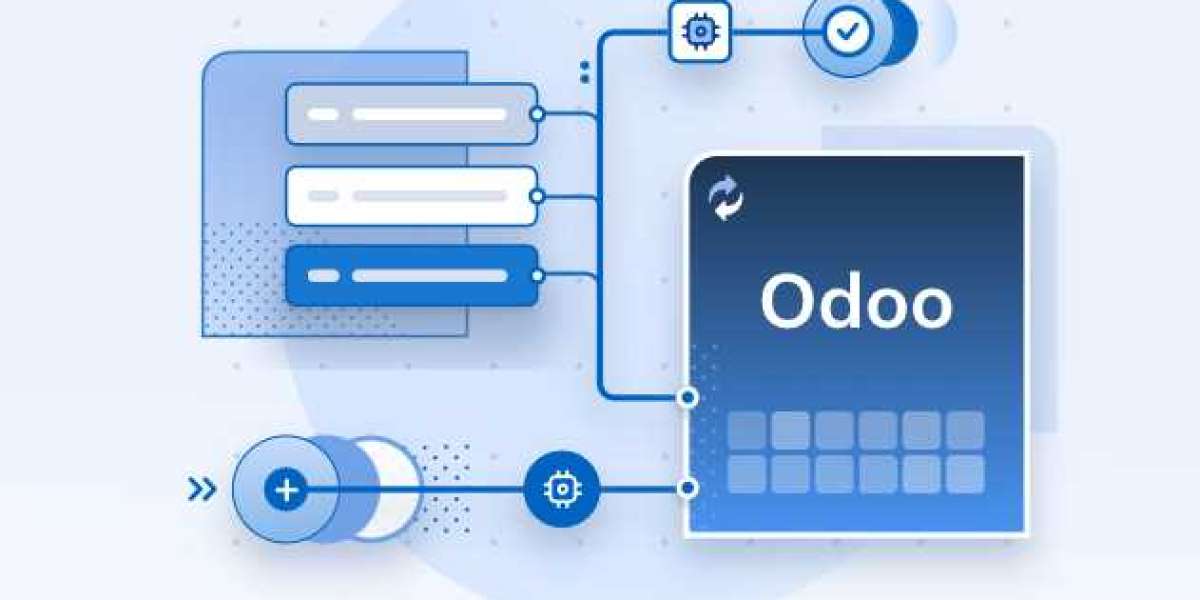Odoo, a versatile and open-source enterprise resource planning (ERP) software, has revolutionized the way businesses manage their operations. With its modular structure, Odoo enables businesses to select and implement the precise functionality they need, from accounting and inventory management to sales, human resources, and customer relationship management. But beyond these ready-made modules, the true power of Odoo lies in its ability to support custom app development, enabling businesses to tailor the system to meet their unique needs.
If you are considering building a custom Odoo app for your business, it is essential to understand the development process. From initial concept to final implementation, creating an Odoo app requires careful planning, technical expertise, and collaboration. In this article, we will walk you through the Odoo app development process, providing a detailed explanation of the key stages involved and the steps needed to turn your idea into a fully functional Odoo application.
Step 1: Identifying the Business Needs
The first and most critical step in the Odoo app development process is understanding the core business requirements. Whether you’re developing a new module or customizing an existing one, it is crucial to begin by identifying the specific problems or inefficiencies that the app is designed to address. This involves gathering input from various stakeholders within the organization, such as managers, end-users, and IT specialists.
Key Considerations:
Business Goals: What are the strategic objectives behind the app development? Is it aimed at streamlining operations, improving reporting, or enhancing customer interaction?
Existing Workflow: How does the current workflow function, and where does it fall short? This will help in defining the functionalities the app needs to support.
Integration Needs: How will the new app integrate with existing Odoo modules or third-party applications? Understanding integration requirements is crucial for smooth operation.
This stage is all about translating your business needs into technical requirements. It is important to have detailed discussions and workshops with key stakeholders to ensure that the app development team has a clear understanding of the scope and objectives.
Step 2: Planning and Feasibility Assessment
Once the business needs are clearly defined, the next step is planning and feasibility assessment. This phase focuses on assessing the viability of the project from both a technical and business perspective.
Key Activities:
Requirement Documentation: A comprehensive specification document should be created, outlining the app’s core functionalities, user interface (UI) design, and integration points. This document serves as a reference throughout the development process.
Resource Allocation: The development team should determine the number of developers, designers, and other specialists required for the project. The timeline and cost estimates should also be prepared.
Technical Feasibility: The development team assesses the feasibility of implementing the app within the Odoo framework. This includes analyzing potential challenges related to performance, security, scalability, and integration.
If any limitations are identified during this phase, it’s essential to adjust the scope or re-evaluate the app’s features. An effective plan minimizes risks and ensures the project stays on track.
Step 3: Design and Prototyping
Designing the user interface and user experience (UI/UX) is a pivotal phase in the Odoo app development process. The design should align with your business requirements and provide an intuitive, user-friendly interface. During this stage, the development team will create wireframes, mockups, and interactive prototypes to visualize the app’s structure and flow.
Key Design Considerations:
User Experience (UX): The app should be easy to navigate, with workflows that make sense to the end-user. A well-designed UX will improve user adoption and reduce training time.
User Interface (UI): The visual design of the app should be consistent with your brand identity, making it visually appealing while maintaining functionality.
Mobile Responsiveness: Since Odoo apps are often used on different devices, ensuring mobile responsiveness is a crucial part of the design process.
During this phase, it’s important to gather feedback from stakeholders and users to refine the design before moving on to the development stage. Iterative design and prototyping can help address any usability concerns early on.
Step 4: Development and Customization
With the design approved, it’s time for the development phase. This is where the bulk of the work takes place, as the developers begin coding the app based on the specifications outlined earlier. The development process in Odoo typically involves Python (for the backend) and XML (for the frontend).
Key Activities:
Backend Development: Odoo’s backend is powered by Python, which allows for deep customization. Developers will create models, business logic, and workflows that define how data is processed and stored in the app.
Frontend Development: For the frontend, developers will design the user interface using XML and JavaScript. They will focus on creating an intuitive and responsive UI that matches the earlier design prototypes.
Database Schema: Developers will define the database schema based on the app’s requirements, ensuring that data is structured properly and is easily accessible.
Integration: If the app requires integration with other Odoo modules or third-party software, developers will implement the necessary API connections, ensuring seamless communication between systems.
During the development phase, regular check-ins with stakeholders are essential to ensure that the app aligns with business needs and expectations. It’s also important to conduct unit testing and peer reviews to identify any bugs early in the process.
Step 5: Testing and Quality Assurance
Once the development phase is complete, it’s time for thorough testing and quality assurance (QA). This phase ensures that the app functions as expected and is free from bugs, performance issues, or security vulnerabilities.
Types of Testing:
Unit Testing: Developers run unit tests to check individual components of the app for errors and ensure that they perform as expected.
Integration Testing: The app is tested to ensure that it integrates seamlessly with other Odoo modules and external systems, if applicable.
User Acceptance Testing (UAT): End-users test the app in a real-world scenario to ensure it meets their needs and expectations. Feedback from UAT is invaluable for making final tweaks before deployment.
Performance Testing: The app is tested for performance, especially if it will handle large volumes of data or transactions. Optimizing performance ensures that the app runs smoothly under various conditions.
Testing should be comprehensive and iterative, with fixes implemented as issues are identified. After resolving bugs and optimizing the app, it is ready for deployment.
Step 6: Deployment and Implementation
After successful testing, the Odoo app is ready for deployment. This phase involves installing the app on the production environment and ensuring that it functions smoothly in the live system.
Key Activities:
Server Setup: The app is deployed to the live Odoo environment, and server configurations are adjusted to ensure optimal performance.
Data Migration: If the app replaces or extends an existing system, data migration may be required to transfer data from legacy systems to the new app.
Training: End-users should be trained on how to use the app effectively. A well-structured training program will help users get up to speed quickly and make the most of the app’s features.
Monitoring: After deployment, the app is closely monitored for any issues that arise in the live environment. This includes performance monitoring, security checks, and user feedback collection.
A successful deployment ensures that the app is ready for everyday use, with users able to access its full functionality without issues.
Step 7: Maintenance and Updates
The development of an Odoo app doesn’t end with deployment. To ensure that the app continues to meet business needs and stays up to date with new versions of Odoo, ongoing maintenance and updates are essential.
Key Activities:
Bug Fixes and Patches: Over time, bugs may be discovered, or new issues may arise. Regular maintenance ensures that these are addressed quickly.
Feature Enhancements: As business needs evolve, new features or updates may be required. Odoo app development is iterative, and updates can be made to enhance functionality.
Security Updates: Keeping the app secure is a top priority. Regular security updates are essential to protect the app from vulnerabilities and threats.
Odoo Version Upgrades: As new versions of Odoo are released, the app may require adjustments to ensure compatibility with the latest version of the Odoo platform.
Ongoing support and maintenance help ensure the long-term success of your Odoo app and its continued alignment with business goals.
Conclusion
The Odoo app development process is a structured approach that ensures your business receives a fully customized, high-quality solution. From identifying the business needs to the final deployment and ongoing maintenance, each step in the process plays a critical role in delivering a functional and efficient app.
By partnering with an experienced team that specializes in Odoo app development services, you can ensure that your custom app is built to meet your unique business requirements and set your company up for success. Whether you’re creating a new module, customizing an existing one, or integrating with third-party applications, following the right development process will lead to a more efficient and effective Odoo implementation.








